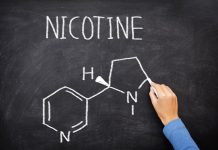Teachers and science professionals are much less likely to smoke than the general population. Combined with their authority and skill at explaining concepts, they could be both positive role models and serve vital educational roles in efforts to help more people quit smoking.
 Smoking affects everybody, regardless of their place in society. However, research has consistently revealed several differences in smoking rates between people with different professions, people with differing levels of education and many other factors. Investigating these differences is essential to our understanding how to reduce smoking in society and usher in a tobacco-free world. In particular, education professionals – such as teachers – and science professionals are among the least likely professionals to smoke, and there is a strong negative correlation between education level and smoking rates.
Smoking affects everybody, regardless of their place in society. However, research has consistently revealed several differences in smoking rates between people with different professions, people with differing levels of education and many other factors. Investigating these differences is essential to our understanding how to reduce smoking in society and usher in a tobacco-free world. In particular, education professionals – such as teachers – and science professionals are among the least likely professionals to smoke, and there is a strong negative correlation between education level and smoking rates.
Smoking Rates for Education and Science Professionals
Smoking rates by occupation reveal disparate levels of tobacco use in different groups. For instance, 31.4% of those in the construction and extraction occupational group smoke, compared to 16.3% of those in management. This disparity reveals the need to focus educational and preventative measures for the most at-risk groups in the workforce.
Education and science professionals are have some of the lowest smoking rates out of all professions. Data from the National Health Interview Survey shows that just 9.2% of those working in the life, physical or social sciences smoke. This is defined as having smoked 100 or more cigarettes throughout their lifetime and currently smoking either every day or some days. This rate contrasts sharply with the smoking rate among the U.S. population, which shows 16.8% of adults are current smokers.
Similarly, the survey shows that only 8.7% of education, training and library workers smoke. This group had the lowest smoking rate out of all of those included. This group doesn’t focus solely on education professionals (for example, it includes library workers), but the finding is very positive. Teachers in particular are authority figures for youth, so their low smoking rate should minimize any negative influence this could have on students. However, this is also a reason why reducing smoking in this group should continue to be a priority.
Smoking and Education Level
Surveys also look at the relationship between smoking and education level. People with a GED certificate have the highest smoking rate, with 43% being smokers. In descending order, 22.9% of those with 12 years or less of education (no diploma), 21.7% of those with a high school diploma, 19.7% of those with some college (but no degree), 17.1% of those with an associate’s degree, 7.9% of those with an undergraduate degree and 5.4% of those with a graduate degree smoke.
These statistics show a clear link between education and smoking rates. There is also a well-established relationship between income level and smoking rates, with lower-income individuals being more likely to smoke.
There are many reasons for this difference. One of the most relevant is the level of stress and pressure experienced by lower-income and lower-education adults. As with other addictions, stress can lead people to smoke, even though smoking doesn’t actually reduce your stress level in the long term.
Another relevant factor is how education impacts on people’s receptiveness to educational campaigns about the negative effects of smoking. This is supported by statistics on smoking rates and education since the risks of smoking first became known in the 1950s. The rate of smoking among college graduates declined rapidly, but the decline in smoking among those with less education started later and progressed more slowly.
Both of these points underline the need for tailored educational campaigns and other programs to reduce smoking among low-income and low-education level smokers. More challengingly, it suggests that taking steps to reduce inequality in society and improve education in general could have a positive impact on smoking rates.
The Role of Role Models: How Education and Science Professionals Can Help Reduce Smoking
The low smoking rates among education and science professionals presents an opportunity to encourage more smokers to quit. Education professionals, for example, are skilled at teaching youth and adults, and occupy respected positions in society. A teacher taking time to educate his or her students about the risks of smoking will further cement these lessons into students and make it less likely they will take up smoking in future. Such efforts are more effective when they are part of a coordinated tobacco prevention program throughout the school, though.
Science professionals could serve as positive role models in a similar way. In particular, science professionals are likely to have a solid understanding of the multitude of risks of tobacco use, and to be more skilled at conveying the facts to people without their expertise. As well as being positive role models in their day-to-day lives, science professionals opting to get involved in smoking prevention campaigns add authority, credibility and expertise to the vital messages being delivered.
Finally, although the most positive role educational and science professionals can play in creating a tobacco-free world is through education and campaigning, we should remember that some people in these professions do still smoke. While focusing on professions and social groups with higher smoking rates makes sense, groups who are less likely to smoke should still be offered support and guidance to help them quit.
By enlisting educators and scientists to help educate the public about the risks of smoking and the benefits of quitting, as well as helping more of them become tobacco-free, we can turn them into role models for a better, tobacco-free future.





